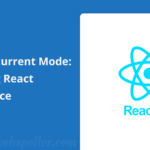
Table of Contents
Are you curious about the role of an AWS Solutions Architect? You’re not alone! Many people ask what this position entails, especially as cloud computing continues to gain traction in the tech industry. In this article, we’ll explore the day-to-day responsibilities, skills needed, and the importance of AWS Solutions Architects in helping organizations navigate the complexities of cloud technology.
Understanding the Role of an AWS Solutions Architect

At its core, the role of an AWS Solutions Architect revolves around guiding customers as they implement cloud technologies. According to Amazon’s job description, Solutions Architects are crucial in helping clients leverage AWS services effectively. With over 200 AWS products and an abundance of documentation, customers can easily feel overwhelmed when determining the best solution for their unique needs. This is where the expertise of an AWS Solutions Architect comes into play.
Key Responsibilities
AWS Solutions Architects wear many hats, but their primary responsibility is to serve as trusted advisors to customers throughout their cloud journey. They don’t directly build the solutions; instead, they offer strategic guidance and technical expertise to ensure customers make informed architectural decisions. Their focus is on delivering secure, high-performance, cost-effective, and fault-tolerant solutions that align with best practices.
The specific roles and responsibilities of an AWS Solutions Architect can vary based on the team they are in. For instance, AWS has various specialized teams, including those focused on enterprise clients, small to medium-sized businesses, and digital native companies. Some Solutions Architects specialize in domains like security or networking, which allows them to address specific customer needs more effectively.
A Day in the Life of an AWS Solutions Architect
So, what does a typical day look like for an AWS Solutions Architect? While no two days are the same, many tasks are common. Approximately half of their time is spent engaging directly with customers. This can involve:
- Whiteboarding Sessions: Collaborating with customers to visualize their architecture when moving to AWS.
- Proof of Concept Development: Creating demos to showcase how specific solutions can benefit the client.
- Architectural Reviews: Assessing existing customer architectures and providing improvement suggestions.
- Consultation: Answering customer inquiries via calls or emails.
During the remaining time, AWS Solutions Architects focus on internal initiatives, such as:
- Team Meetings: Participating in stand-ups and strategic discussions.
- Technical Workshops: Conducting or attending sessions to enhance skills and knowledge.
- Mentoring: Assisting junior architects or colleagues in their professional development.
- Continuous Learning: Dedicating time to AWS certifications, studying new product updates, and exploring advanced AWS services.
Transitioning to a Solutions Architect Role
For those looking to become AWS Solutions Architects, it’s important to note that positions like Associate Solutions Architect provide structured support and learning opportunities. This role often involves shadowing experienced architects to gain hands-on experience and feedback. Aspiring architects should focus on acquiring certifications, such as the AWS Security Specialty certification, to deepen their knowledge and enhance their qualifications.
Conclusion
In summary, AWS Solutions Architects play a pivotal role in helping businesses navigate the complex landscape of cloud computing. Their expertise not only guides customers in making effective architectural decisions but also ensures that solutions are tailored to meet specific business needs. Whether you’re interested in becoming a Solutions Architect or simply want to understand the role better, the insights provided here will help you appreciate the value these professionals bring to the table.
If you have any questions or would like to learn more about AWS Solutions Architect roles, feel free to leave a comment!


